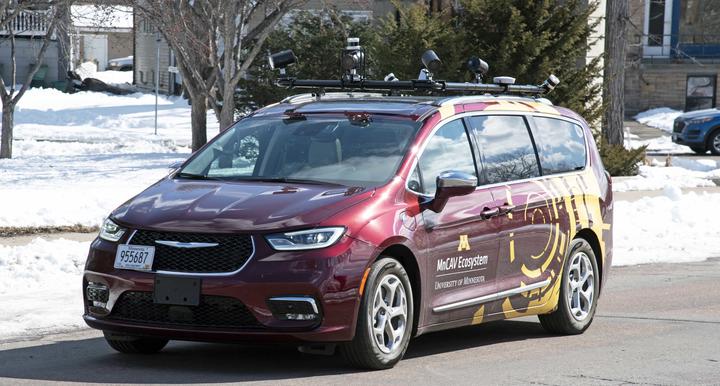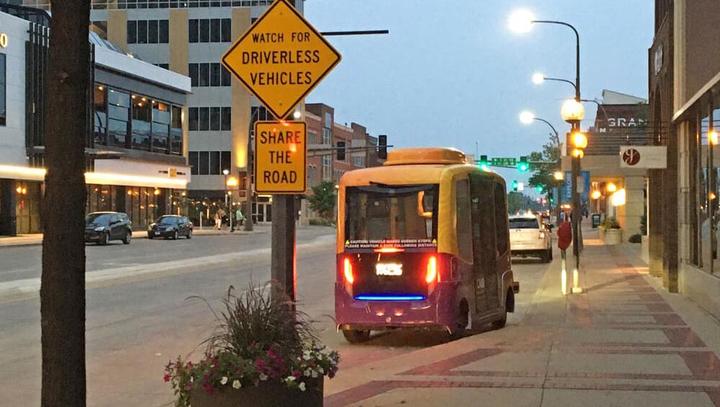
Focus Areas
Leveraging University of Minnesota expertise with external partners, MnCAV Ecosystem research draws on our unique strengths to conduct research in the following areas:
Cold weather conditions
Minnesota’s climate offers the ideal environment to conduct research and test capabilities to safely operate CAVs in cold weather conditions—critical for taking CAVs from the lab into the streets.
Featured projects in this area:
- Influence of Autonomous and Partially Autonomous Vehicles on Minnesota Roads
- Implementation of Lane Boundary Guidance System for Snowplow Operations
Equity
CAVs carry the potential to improve the livelihood of underserved populations. Our research will explore the daily needs of all communities to inform the design of an equitable mobility system.
Featured projects in this area:
Public perception and trust
Full integration of CAVs into society will require people to believe they are safe. Work in this area will aim to foster awareness of CAV technologies and design vehicles that humans can trust.
Featured projects in this area:
The connected environment
A successful transition to CAV will require a strategy that integrates both the hard infrastructure (such as roadways, traffic lights, and curbs) and companion road uses (such as light rail) to build a connected ecosystem.
Featured projects in this area:
Vulnerable road users
Safely integrating CAVs into the urban and rural transportation networks will require ways to detect and identify vulnerable road users, such as bicyclists and pedestrians, as well as learning how these road users will interact with CAVs.
Featured projects in this area:
- Smart Tracking Systems for Safe and Smooth Interactions Between Scooters and Road Vehicles
- Assessment of Pedestrian Safety and Driver Behavior Near an Automated Vehicle
More Research
For a comprehensive list of University of Minnesota research related to connected and automated vehicles, visit the CAV research page on the CTS website.

